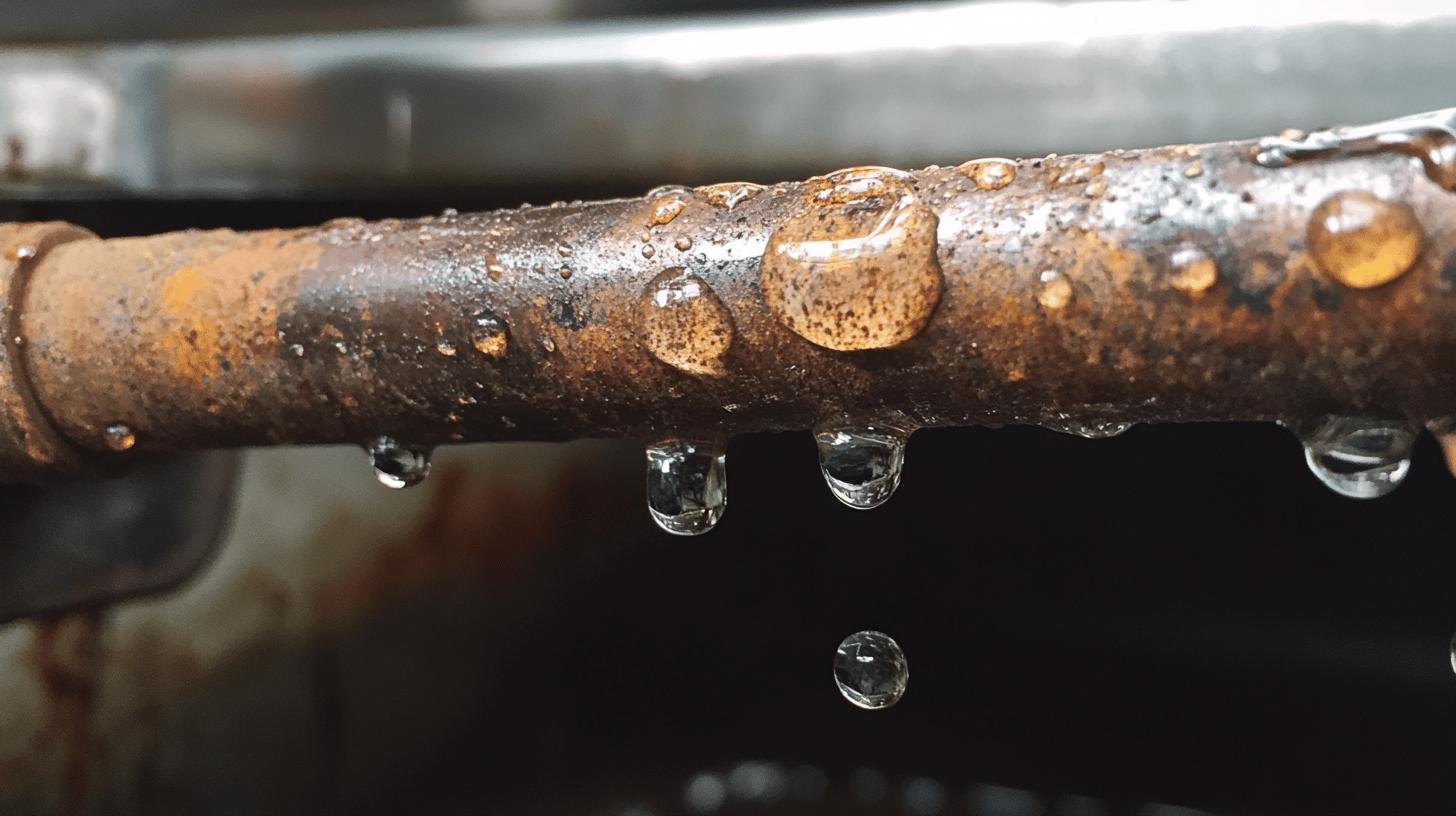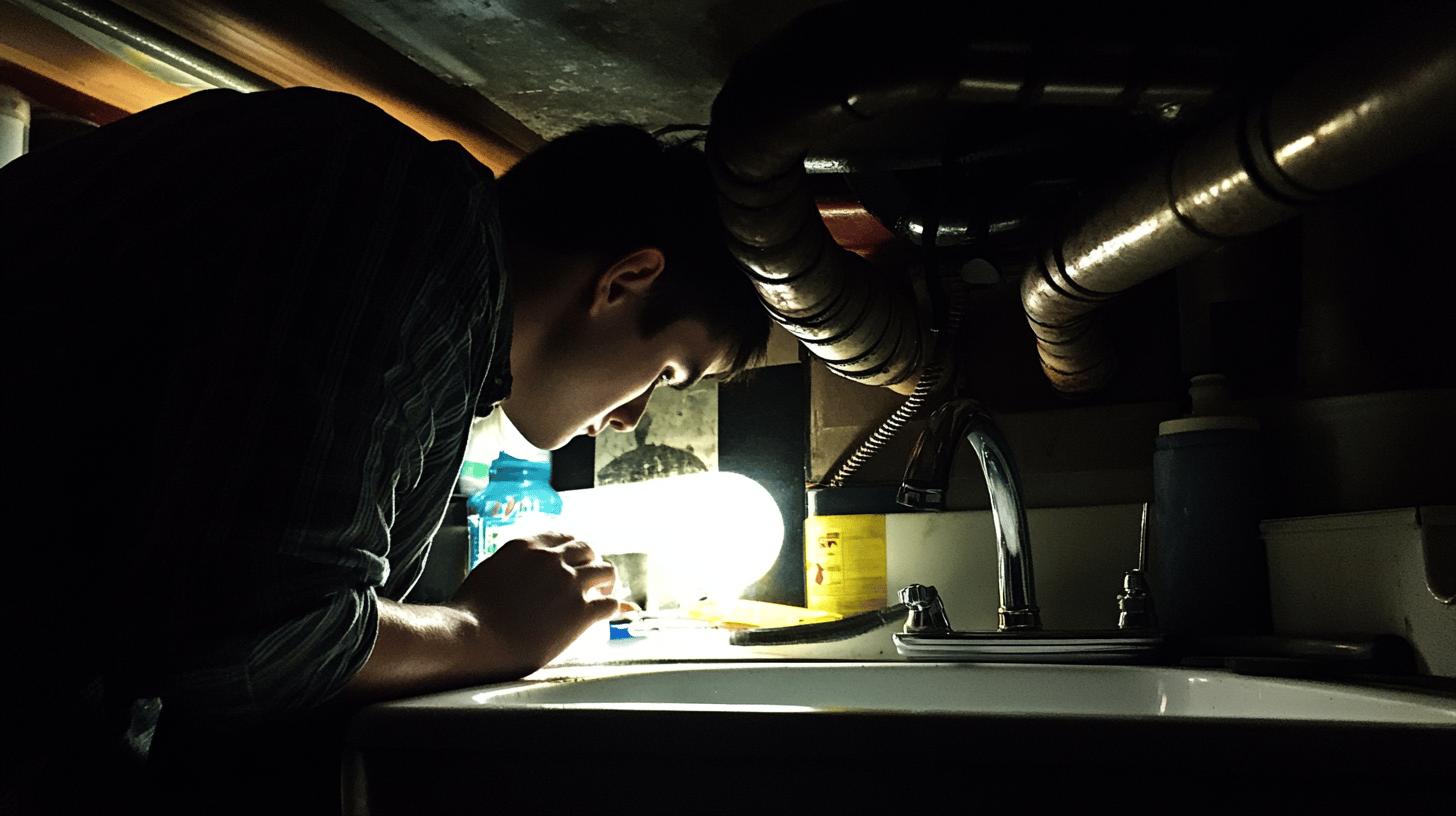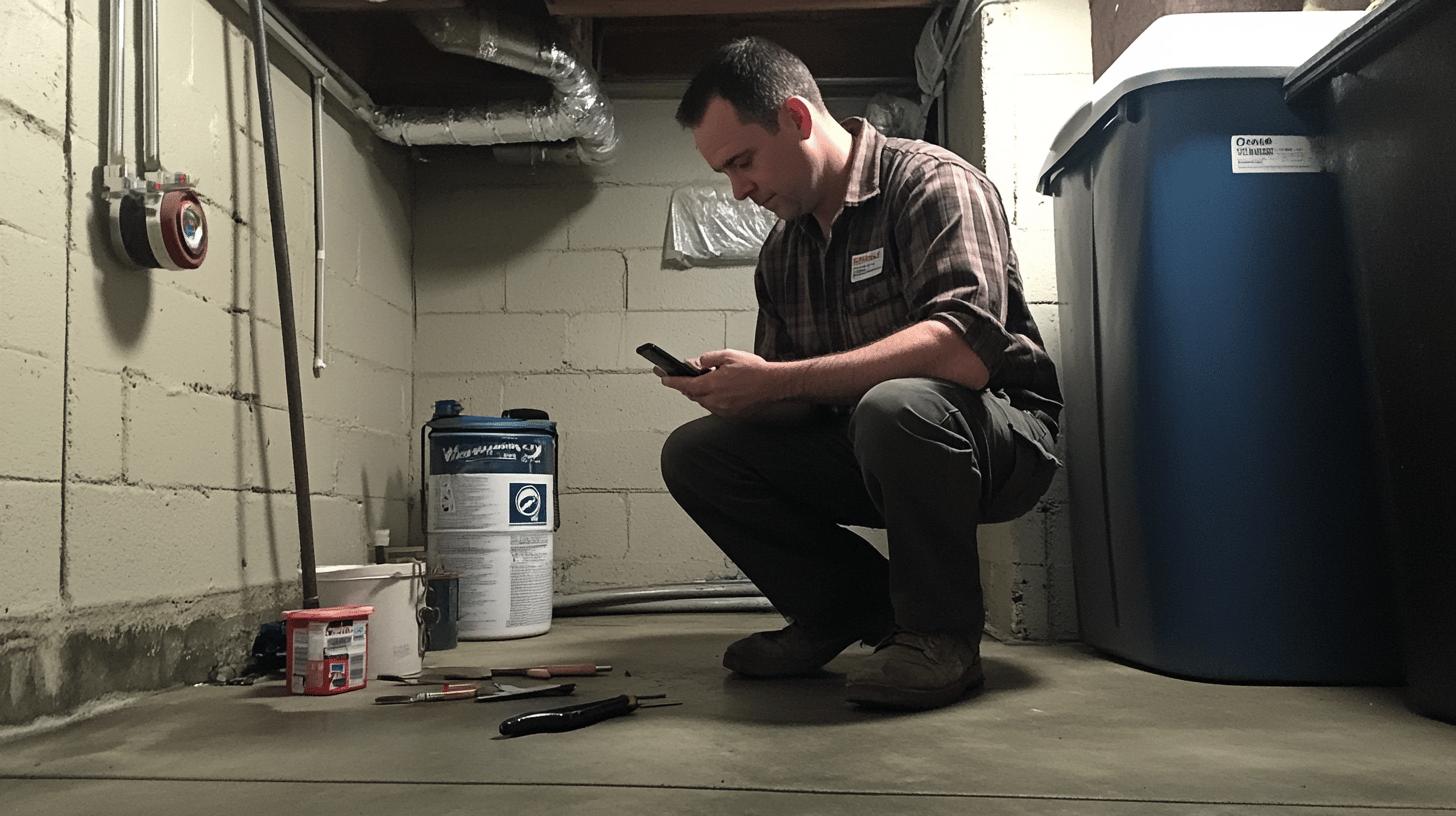TL;DR:
-
Copper: 70-80 years, inspect after 60 years.
-
Brass, Cast Iron, Galvanized Steel: 80-100 years, monitor for corrosion and rust.
-
PVC: 24-50 years, check joints regularly.
-
Signs for Replacement: Discoloration, leaks, low pressure, unusual taste/smell.
-
Factors Affecting Lifespan: Climate, material type, pipe age, maintenance practices.
-
Maintenance Tips: Regular inspections, clear drains, and annual professional checks.
-
Cost-Lifespan Comparison:
- Copper: Higher cost, long lifespan.
- PVC: Low cost, shorter lifespan.
- PEX: Cost-effective, 70-80 years.
-
Professional Services: Accurate diagnosis and potential insurance support.
Have you ever wondered how long your pipes can really last before needing a replacement? It’s a question many homeowners overlook, yet understanding the lifespan of your plumbing is crucial for avoiding costly issues. From the longevity of copper pipes reaching up to 80 years to the more limited lifespan of PVC, each material brings different considerations. In this article, you’ll discover the expected lifespans of various pipe materials, signs that indicate a need for replacement, and tips to prolong their usability. Your plumbing’s future depends on what you know today.
Typical Lifespan of Different Pipe Materials
Knowing how long different types of pipes last is crucial for keeping your plumbing system running smoothly. Copper pipes can typically last 70 to 80 years, while brass, cast iron, and galvanized steel may last 80 to 100 years. On the other hand, PVC pipes, which are more affordable, usually last about 24 to 50 years. Each type has its pros and cons that influence how often they need replacing.
Good maintenance can help extend your pipes’ lifespan, regardless of the material. Regular inspections and quick repairs can prevent minor issues from turning into major problems, helping your pipes last longer. Lead pipes should be replaced immediately since they can contaminate your water and pose health risks.
Understanding your pipes’ expected lifespans allows you to plan for replacements and avoid unexpected issues. This knowledge helps you take proactive measures in maintaining your plumbing system. By budgeting for pipe replacements and repairs, you can ensure your home’s plumbing remains safe and reliable.
| Material | Expected Lifespan | Replacement Recommendation |
|——————-|——————-|————————————————-|
| Copper | 70-80 years | Inspect regularly after 60 years |
| Brass | 80-100 years | Monitor for signs of corrosion |
| Cast Iron | 80-100 years | Routine checks for rust and wear |
| Galvanized Steel | 80-100 years | Replace if signs of rust appear |
| PVC | 24-50 years | Check joints and connections regularly |
Signs Indicating the Need for Pipe Replacement

Keep an eye out for leaks and discoloration—these are signs your pipes might need replacing. If you notice water spots on your walls, ceilings, or floors, that likely means there’s a leak somewhere in your plumbing. Discolored water, especially if it’s brown or rust-colored, indicates pipe corrosion. This happens when rust gets into the water and can lead to clogs or even pipe bursts if you don’t address it.
Low water pressure is another red flag. If the pressure is consistently low, it could be due to clogs or leaks, which reduces how well your plumbing works. To find out the cause of low pressure, it’s best to call a professional plumber to ensure the issue is fixed properly.
You should also pay attention to any strange tastes or smells in your water. A metallic taste or bad odor could mean corrosion or sediment buildup, both of which can affect your water quality and pose health risks. Addressing these issues quickly with professional help can prevent further problems.
Regular inspections are essential for spotting potential pipe issues early. A pro plumber can catch early signs of wear, helping you save money on costly repairs down the line. Keeping up with routine maintenance ensures your plumbing stays functional for the long haul.
- Discolored water
- Visible leaks
- Low water pressure
- Unusual water taste or smell
- Regular plumbing inspections
Factors Affecting Pipe Longevity
How often should you replace your pipes? It really depends on the material and how old they are. Copper pipes can last between 70 to 80 years, while PVC pipes typically last around 24 to 50 years. As pipes get older, they become more vulnerable to leaks and corrosion, which can compromise the structure of your home. That’s why regular inspections are essential as pipes approach the end of their lifespan to avoid unexpected failures.
Environmental factors also play a significant role in how long pipes last. For example, fluctuating temperatures can cause pipes to expand and contract, putting stress on the material and potentially leading to cracks. In colder climates, pipes can freeze and burst, while extreme heat can degrade materials over time. Additionally, the local environment—like soil conditions and humidity—can impact pipe durability.
- Climate conditions
- Pipe material type
- Age and wear of pipes
- Maintenance practices
Maintenance Tips to Extend Pipe Lifespan

Regular maintenance is key to keeping your plumbing system running smoothly and extending its life. By scheduling routine checks and making timely repairs, you can stop small issues from turning into big headaches. Regularly inspecting your pipes helps you catch early signs of damage, like corrosion, which can weaken them. Good maintenance ensures your plumbing stays efficient and safe.
It’s also essential to have professional inspections at least once a year. These experts have the right tools and experience to identify subtle problems that you might miss during DIY checks. They can make necessary repairs or replacements before they escalate into emergencies.
Besides hiring professionals, there are some DIY steps you can take to maintain your pipes. Make sure to check for leaks, clear out drains to prevent clogs, and listen for any strange noises in your plumbing. These simple practices can help you spot potential issues early and take preventive action.
- Inspect pipes regularly for leaks and corrosion.
- Clear drains to avoid clogs and maintain flow.
- Schedule annual professional plumbing inspections.
Comparing Costs and Lifespan of Pipe Materials
When choosing pipe materials, it’s essential to find a balance between cost and lifespan. How often should pipes be replaced? It mainly depends on the material you choose. Copper pipes, although pricier at first, provide long-term value with a lifespan of 70 to 80 years. On the other hand, cheaper materials might need more frequent replacements, which can add up over time. Keeping these factors in mind helps you make informed decisions that fit both your budget and durability needs.
Let’s look at some common materials: PVC is affordable and lasts about 24 to 50 years, making it a popular choice. Copper is more durable and has a longer lifespan but comes with a higher initial cost. PEX is another option that’s cost-effective and flexible, with a lifespan similar to copper, making it a great choice for both retrofitting and new installations. Your decision should be based on your specific needs and the environment where the pipes will be used.
Consulting professional plumbers is also a smart move. They can provide accurate estimates for costs and lifespans based on your home’s plumbing and local conditions. Their expertise can help you select the right materials that meet your durability needs without breaking the bank. With professional guidance, you can ensure a reliable plumbing system that minimizes replacements and long-term costs.
| Material | Cost-Lifespan Comparison |
|——————-|—————————————–|
| Copper | Higher initial cost, 70-80 years lifespan|
| PVC | Lower cost, 24-50 years lifespan |
| PEX | Cost-effective, 70-80 years lifespan |
| Galvanized Steel | Moderate cost, 80-100 years lifespan |
Professional Plumbing Services and Their Importance

Professional plumbers play a crucial role in keeping your plumbing system running smoothly. They can accurately diagnose and fix complex issues, which helps prevent the same problems from coming back. With their expertise, you get solutions tailored to your specific needs, whether it’s minor repairs or full replacements, all done with high-quality workmanship. Their advanced tools also contribute to the long-lasting health of your plumbing.
It’s also important to consider the financial side of plumbing services. Some insurance policies might cover replacement costs, which can lighten the financial load. Professionals can help you navigate claims to make sure you get the most out of your coverage. Plus, having regular service contracts with plumbing experts provides ongoing maintenance and peace of mind, helping to extend the life of your pipes and avoid expensive repairs down the line.
- Accurate diagnosis and repair
- High-quality and reliable solutions
- Potential insurance support for replacements
Final Words
Knowing when and how often to replace your pipes is essential for keeping your plumbing system reliable. Understanding the typical lifespans of different pipe materials can help you make better decisions.
By taking care of brass pipes or monitoring wear on copper, you can prolong their lifespan. Always watch for signs that might indicate it’s time for a replacement, like leaks or discolored water. Regular maintenance, along with professional inspections, ensures your plumbing stays strong and functional.
Putting in the time and effort for these practices will ultimately protect your home’s plumbing health for years to come.
FAQ
How often do pipes need to be replaced?
Pipes usually need replacement based on their material and condition. Copper pipes can last 70-80 years while PVC pipes last about 24-50 years. Regular inspections help determine if replacement is necessary sooner.
How do you know if your pipes need to be replaced?
You know pipes need replacement if you notice leaks, discolored water, or low water pressure. These signs often indicate corrosion or damage that warrants immediate attention to prevent further issues.
How much does it cost to replace plumbing in an old house?
The cost to replace plumbing in an old house varies widely depending on the house size and materials used. Consulting a professional plumber can provide an accurate estimate based on specific needs.
How long do copper pipes last?
Copper pipes typically last 70-80 years with proper maintenance. Keeping an eye on signs of wear can help maintain their longevity and efficiency in your plumbing system.
How long do PEX pipes last?
PEX pipes have a lifespan similar to copper, usually lasting around 40-50 years. Their flexibility and resistance to scale make them a popular choice for many homeowners.
How long do PVC pipes last?
PVC pipes generally last between 24-50 years. Regular maintenance and inspections can help maximize their lifespan and reliability in your plumbing infrastructure.
How do I know if my copper pipes need replacing?
Copper pipes may need replacing if you experience frequent leaks, discolored water, or a metallic taste in the water. These signs often indicate corrosion or degradation.
How much does it cost to replace plumbing?
Replacing plumbing can range from a few thousand to several tens of thousands of dollars. Factors include the scope of the project and materials selected, so professional advice is recommended.
How often should you repipe your house?
Repipe your house when signs of extensive wear arise, typically every 50-100 years based on pipe materials like copper or galvanized steel, or sooner if frequent problems occur. Regular inspections can guide the timing.

